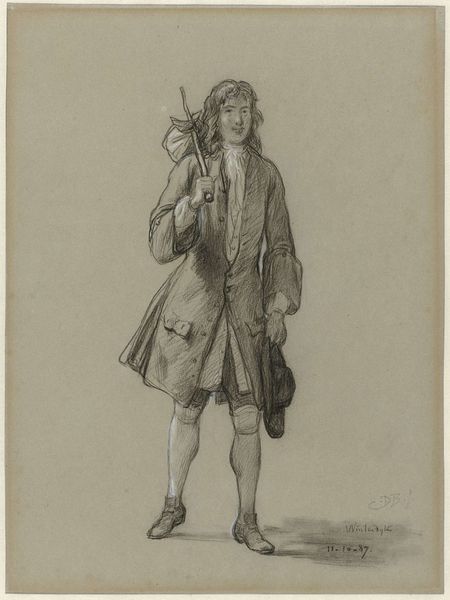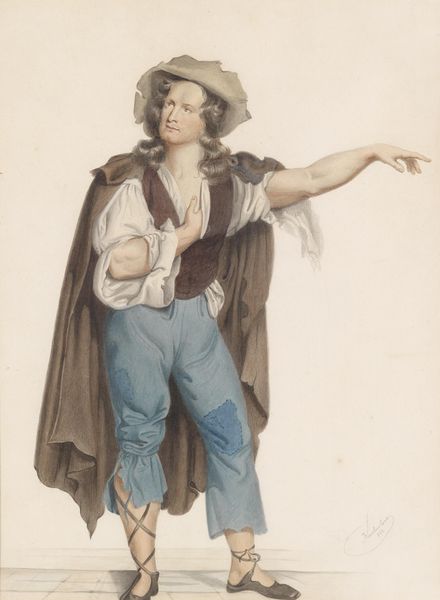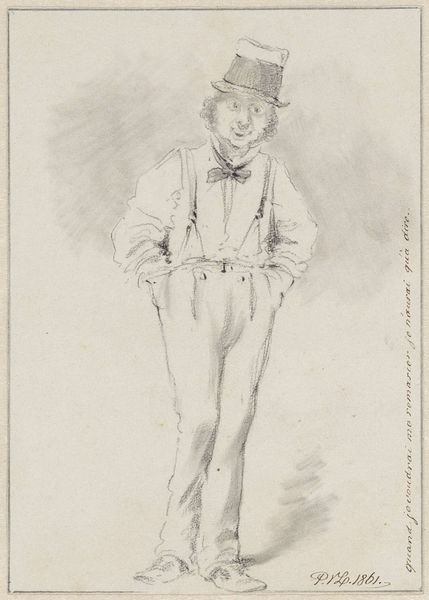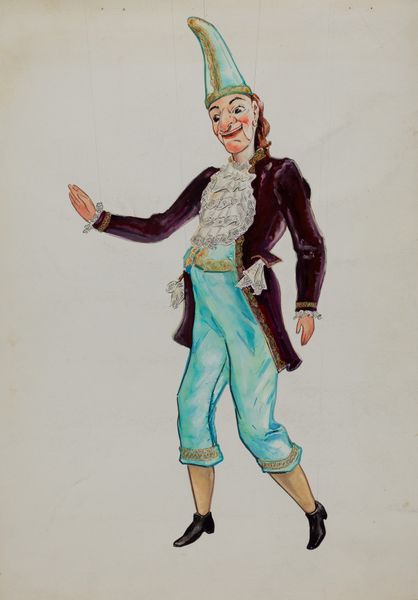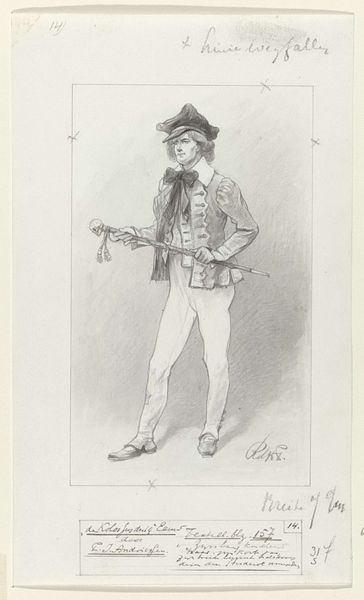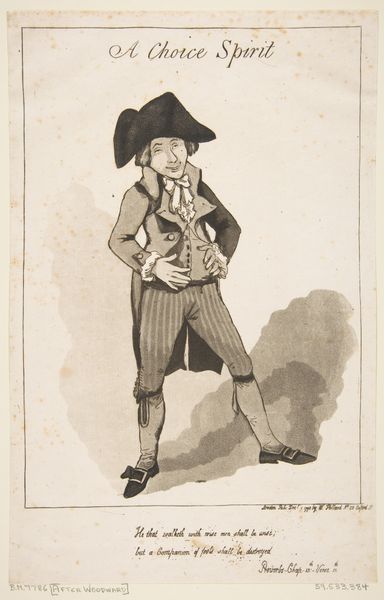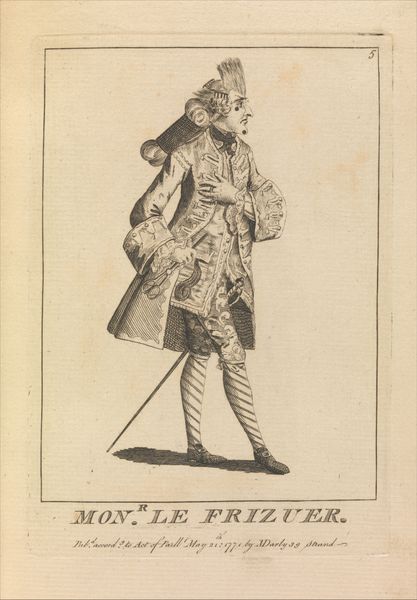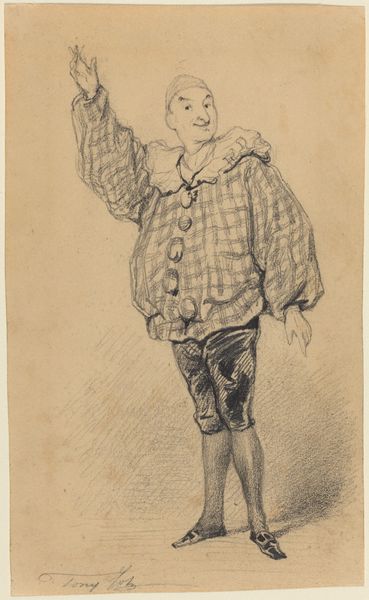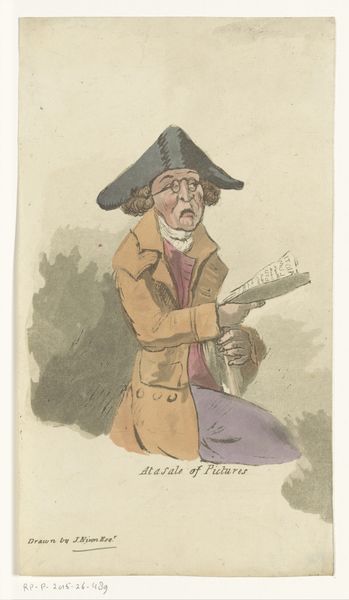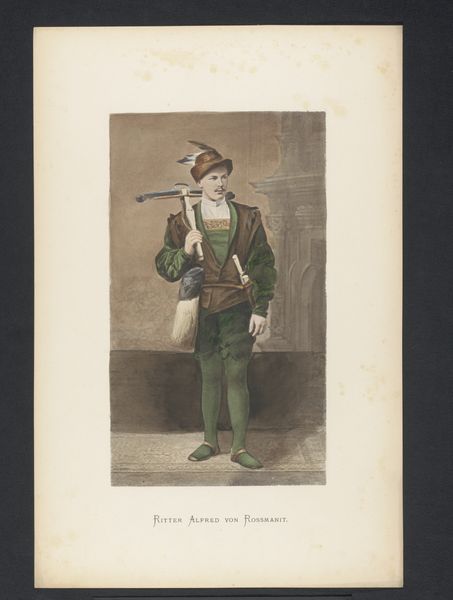
Man in Louis XIII-kledij, staande ten voeten uit, driekwart naar rechts, een glas wijn heffend 1881
0:00
0:00
Dimensions: height 323 mm, width 208 mm
Copyright: Rijks Museum: Open Domain
Editor: Here we have Franz Skarbina’s "Man in Louis XIII-kledij, staande ten voeten uit, driekwart naar rechts, een glas wijn heffend" from 1881, done in watercolor. It has a very theatrical feel. The figure looks almost like an actor on a stage. What do you see in this piece? Curator: Absolutely. And that theatricality, I think, is key. This isn’t just a portrait, but a carefully constructed image playing with historical representation and, perhaps, even gender. How does this idealized depiction of a man, referencing Louis XIII, function in the context of late 19th-century Germany? It seems like Skarbina is positioning masculinity as a performance. What’s your read on how his clothing signifies power, or perhaps satirizes it? Editor: That's interesting. I hadn't thought about the satire, but now I see a kind of deliberate artifice. He’s wearing the costume of power, but it feels…distant, almost hollow. Curator: Precisely! It invites us to question what it means to embody authority. Think about the rise of the German Empire at the time, its own attempts to create a historical narrative and project strength. Is Skarbina celebrating or critiquing this impulse through the romantic lens of Romanticism? Is there perhaps even a critique about the performative nature of social class here? Editor: It is definitely something to consider... I see what you mean about the questioning of authority now! The context really does deepen my understanding. Thanks. Curator: My pleasure. Thinking about artworks like these as participants in ongoing conversations about identity and power makes art history truly relevant.
Comments
No comments
Be the first to comment and join the conversation on the ultimate creative platform.
